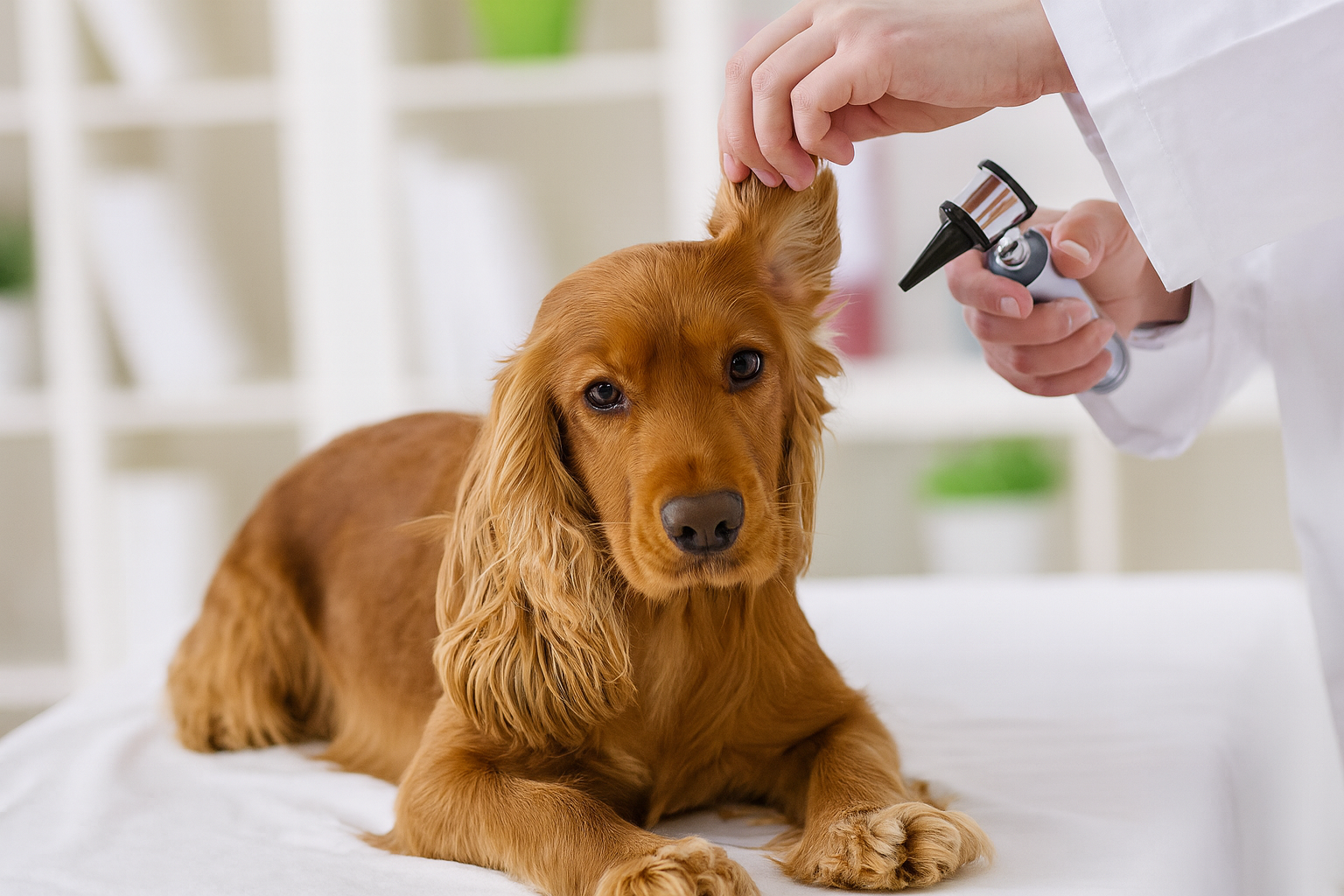When pets need surgery the goal is always the same: to make the experience as safe, comfortable and effective as possible. Thanks to advances in veterinary medicine, laser surgery has become one of the most exciting developments in achieving this.
Using a finely tuned beam of light instead of a scalpel, this approach allows for cleaner, more accurate procedures with far less pain, swelling and bleeding. For many pets, it’s transforming the surgical experience altogether.
What Is Laser Surgery and How Does It Work?
Laser surgery uses concentrated light energy to cut or vaporise tissue, sealing blood vessels and nerve endings at the same time. This means less trauma to the surrounding area, less bleeding and reduced post-operative discomfort. At Dermvet, we use the Vetscalpel CO₂ laser, a highly advanced piece of equipment that has been continually updated over the years to deliver even greater precision and power.
This technology allows us to effectively remove tissue with minimal thermal damage, making it possible to perform both excision and ablation quickly and safely. Haemostasis is excellent and because the nerve endings are sealed during the process, pets experience significantly less post-operative pain and swelling compared to traditional surgical methods.
Our dermatologist is proud to be one of only two veterinary dermatologists in England and Wales to own the Vetscalpel CO₂ laser. This machine offers exceptional control, allowing procedures that would once have been extremely difficult or even impossible with other techniques to be carried out successfully and safely.
By using this equipment, we can successfully treat conditions such as feline ceruminous cystomatosis and Chronic Pododermatitis & Interdigital Furunculosis (CPIF) as well as perform treatments that can prevent the need for TECA-LBO surgery.
A Modern Solution for a Painful Problem
One of the main reasons we introduced CO₂ laser surgery at Dermvet was to treat a challenging and often painful condition known as Chronic Pododermatitis and Interdigital Furunculosis (CPIF). This condition is commonly seen in allergic dogs or breeds with poor foot conformation, such as English Bulldogs. In affected dogs, inflammation between the toes causes the haired skin to swell until it becomes level with the pads, forming what are known as ‘false pads’.
As the dog continues to bear weight on these areas, the openings of the hair follicles become clogged, trapping sebaceous secretions and bacteria. Eventually, the hair follicles rupture internally, releasing keratin and sebum into the surrounding tissue. This triggers a foreign body reaction that results in painful lumps between the toes, commonly (though incorrectly) called interdigital cysts.
Mild cases can sometimes be managed with medication such as steroids, cyclosporine and Epsom salt soaks. However, more advanced cases often don’t respond to these treatments. In the past, the only remaining option was a procedure known as a fusion podoplasty, where the skin between the toes was removed and the digits were sutured together. Unfortunately, this surgery had a high failure rate and frequently left the foot looking and functioning less naturally, with the toes joined in a mitten-like fashion.
Today, CO₂ laser podoplasty offers a far more effective and elegant alternative. The laser allows precise removal of diseased tissue without excessive damage to the surrounding healthy skin. Once the abnormal tissue is removed, the wound is allowed to heal naturally by a process called secondary intention and while it is initially bandaged for about a week it is then left open to heal completely within three to four weeks.
Our dermatologist has treated many cases where the problem was localised using a diode laser in the past, but the diode system produces far more heat and collateral damage, making it unsuitable for larger or more severe cases. The Vetscalpel CO₂ laser, on the other hand, offers the ideal balance of precision, power and control needed to treat extensive areas safely and effectively.
The Role of Laser Surgery in Ear Conditions
Laser surgery is also invaluable in managing ear diseases, especially when dealing with growths, chronic infections or thickened tissue within the ear canal. In some cases, it can serve as a less invasive alternative to TECA-LBO surgery (Total Ear Canal Ablation with Lateral Bulla Osteotomy), which is a major operation often used for severe ear disease.
While TECA-LBO remains the best solution for advanced or deep-seated conditions, the CO₂ laser can sometimes be used to remove problem tissue or small tumours within the ear canal under video otoscopy, offering a much gentler approach. By treating issues early with laser surgery, we can often prevent the need for full canal ablation or at least reduce the extent of future intervention.
Expert Care from a Dedicated Team
At Dermvet, our small but highly skilled team provides a personal, attentive service for every patient. We take time to explain each procedure, assess all available options and tailor treatment to your pet’s individual needs.
Laser surgery represents our commitment to using the best available technology for the welfare of the animals we treat. From chronic skin conditions like CPIF to complex ear problems, we’re proud to offer solutions that are not only medically advanced but also kinder and more comfortable for your pets.
A Gentle, Modern Approach to Healing
Whether used to manage painful pododermatitis, remove ear lesions or perform precise skin surgery, CO₂ laser surgery has revolutionised what’s possible in veterinary dermatology. It offers all the benefits of advanced technology with a focus on compassion, comfort and precision.
If your pet suffers from a chronic skin or ear condition and you’d like to know whether laser surgery could help, get in touch with us at Dermvet today. With experience, care and cutting-edge equipment, we’ll find the gentlest, most effective way to restore your pet’s comfort and quality of life.

